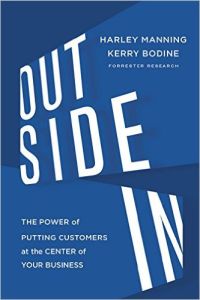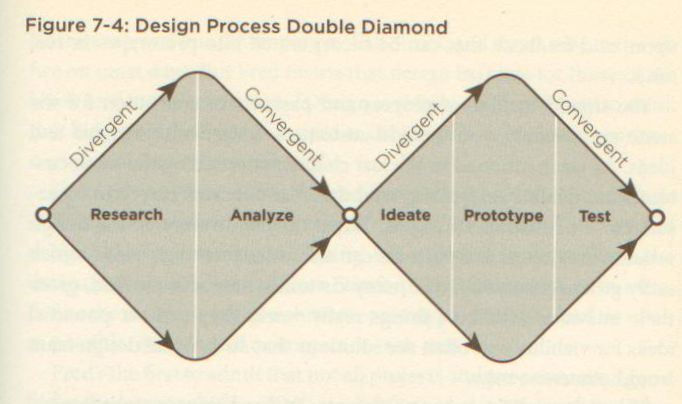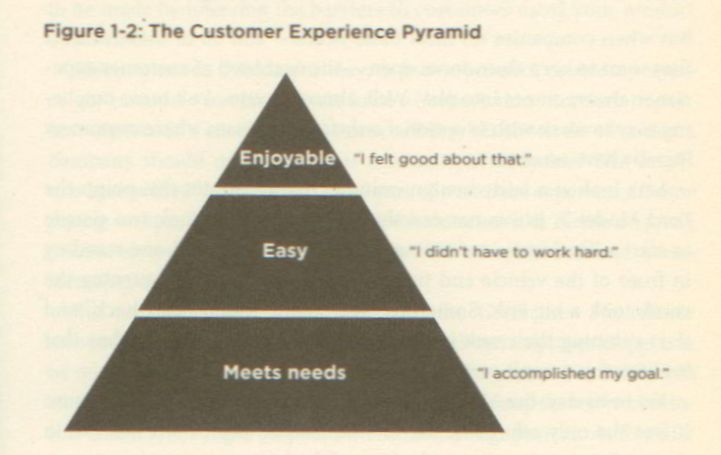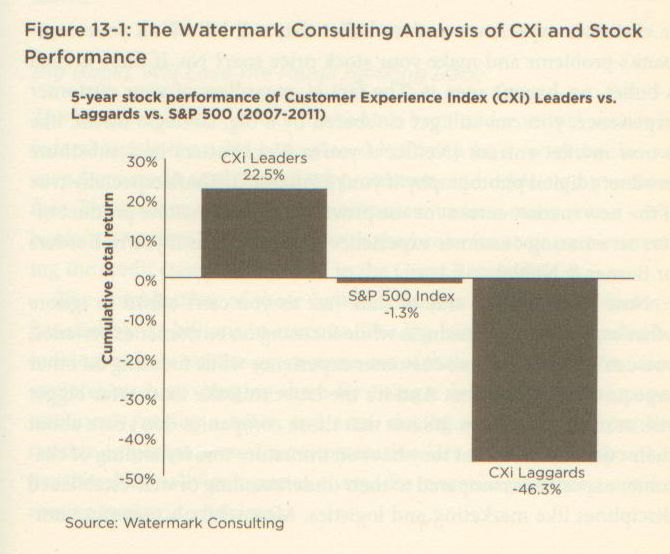
Outside In: The Power of Putting Customers at the Center of Your Business
by Harley Manning and Kerry Bodine
“Customer experience is how your customers perceive their interactions with your company. Once you understand that, you can manage your business from the outside in… To achieve the full potential of customer experience as a business strategy… you must manage from the perspective of your customers, and you must do it in a systemic, repeatable, and disciplined way.”
The benefits of providing exceptional customer experience are “higher revenues resulting from better customer retention, greater share of wallet, and positive word of mouth, plus lower expenses due to happier customers who don’t run up your service costs.” One example from the book is a $1.7 billion per year savings in customer service costs and bill credits as a result of Sprint simplifying its confusing plan options.
Customer experience should not be confused with customer service. Problem resolution can be part of the customer experience, but the source of those problems generally lies in other departments—or in the gaps between silos. The goal is to keep those problems from happening in the first place.
“A customer ecosystem is the complex set of relationships among a company’s employees, partners, and customers that determines the quality of all customer interactions.” Policies, processes, and technologies are also part of the ecosystem. “If you want to fix your customer experience problems, you need to identify their root causes and then create a new equilibrium for your customer experience ecosystem.”
The authors present the six disciplines of customer experience: strategy, customer understanding, design, measurement, governance, and culture.
Strategy
“Great customer experiences don’t happen by accident. They’re the result of countless deliberate decisions made by every single person in your customer experience ecosystem on a daily basis. To align those decisions, employees and partners need a shared vision: a customer experience strategy. Without that beacon, employees are forced to set out on a random walk, and their decisions and actions will inevitably be at odds with each other, despite all the best intentions.”
Customer Understanding
“Thinking you know what customers want is risky. Knowing what they want leads to customer experience improvements that matter.”
“Customers constantly provide unsolicited (and incredibly honest) feedback about their experiences through emails, support calls, chat sessions, and posts on social media sites. These communications can offer mountains of unstructured customer insights—but only if you know how to mine them.”
“If you want to find out what your customers actually do, what motivates them, and what opportunities exist to better meet their needs, you need to conduct some form of ethnographic research. Ethnography, which has its roots in anthropology, is simply about observing your customer’s behavior in a natural setting. That’s why ethnographic research methods like diary studies, in-home observations, and one-on-one interviews can help you understand how to create experiences that fit within the context of your customers’ personal or professional lives. ‘You need to get away from your desk and into the field,’ says Conor Brady, chief creative officer at Organic.” John Deere Financial has a “customer immersion program, making it possible for any employee to spend a full day in a John Deere dealership… This immersion helps employees understand firsthand the challenges faced by dealers when interacting with the firm.”
“Personas are fictional characters that embody your target customers’ key behaviors, attributes, motivations, and goals. Unlike market segmentations, which typically remain nameless and faceless, personas come to life with first and last names, photographs, and vivid narratives that describe day-in-the-life scenarios.”
“Journey maps are documents that visually illustrate a particular persona’s activities over time. Many journey maps plot the entire course of a customer’s relationship with a company—all of the steps that customers take as they discover, evaluate, buy, use, and get support for a product or service—and all of the touchpoints that they interact with along the way. Others zoom in to just one particular part of the journey.” Using a journey map, a Boeing team “discovered that they were providing all of the right tools, but not in a way that supported customers’ work flows.”
Design
“The most effective design processes include people from across the entire customer experience ecosystem—customers, employees, and external partners—to help synthesize research data, ideate possible solutions, create prototypes, and provide feedback… If key stakeholders haven’t been involved with the design process from the start, they’ll react to your changes like antibodies attacking a newly transplanted liver.”

Measurement
“All effective measurement programs model the relationship between customer experience quality, the factors that drive it, and business results.”
The authors present the Customer Experience Pyramid. “Meeting needs is bedrock… Ease of doing business can also be critically important to your customers…. Emotional engagement—how enjoyable something is—often gets ignored in measurement programs because it feels too squishy to drive business improvement.”

Governance
“Specifically, you need to ask two questions about new proposals: Does this change align with our overall customer experience strategy? And if so, what kind of impact will this have on the customer experience? Your customer experience strategy should enable you to green-light the right initiatives quickly and veto the wrong ones without endless hours of debate.”
Culture
“The culture discipline is perhaps the most powerful of all the disciplines because it embeds practices from the other five disciplines into employee DNA. Companies like Disney, Zappos, Southwest Airlines, Ritz-Carlton, and FedEx all point to their customer-centric cultures as key to their success. That’s because this discipline turns customer experience excellence into a habit and makes future change easier by creating an ecosystem that’s receptive to customer experience improvement efforts.”
“First, you need to overhaul your hiring practices so that you get customer-obsessed people… Second, you need to socialize the importance of customer-centricity through storytelling, rituals, and training. Third, you’ve got to reinforce new values and behaviors through informal and formal rewards. Tie it all together with a steady cadence of communication that never lets employees forget about why they’re doing all of this in the first place.”
“Unfortunately, many companies make huge investments in hiring and training only to inadvertently encourage employees to focus on the wrong things. How? They create operational targets for frontline employees instead of basing their incentives on the quality of the service they provide. And they reward behind-the-scenes employees for plowing through lists of internal tasks and projects while providing zero recognition for work that improves the customer experience.”
Each of the six disciplines must be assessed as Missing, Ad Hoc, Repeatable, or Systematic. Then decide whether to build on strengths or address weaknesses… “This is a journey, not a project. Transforming your company from the outside in by adopting the six customer experience disciplines is a major undertaking. It will take years to follow the path from wherever you are today to the Sustain phase. And even when you reach that phase, you won’t be finished working to improve your customer experience, you’ll just be vastly better at improving it.”

The authors present the Forrester Research Customer Experience Index (CXi). “Only 3 percent were Excellent, and just 34 percent were Good… The health insurance industry has anchored the bottom of [the index] since it began.”
The authors compared the stock market performance of the top 10 publicly traded companies in the CXi with the bottom ten. During the five-year period from 2007-2011, the CXi leader portfolio was up 22.5% while the CXi laggard portfolio was down 46.3%. For comparison, the S&P was down 1.3%. The results may be somewhat exaggerated because this period included the financial crisis when bank stocks were clobbered, and big banks have horrible customer experience scores.
“Mediocre customer experience is the norm… This situation presents an incredible near-term opportunity for gaining a competitive advantage.”
Manning, Harley, and Kerry Bodine. Outside In: The Power of Putting Customers at the Center of Your Business. Boston: New Harvest/Houghton Mifflin Harcourt, 2012. Buy from Amazon.com
Disclosure: As an Amazon Associate I earn from qualifying purchases.
One thought on “Outside In”
Comments are closed.